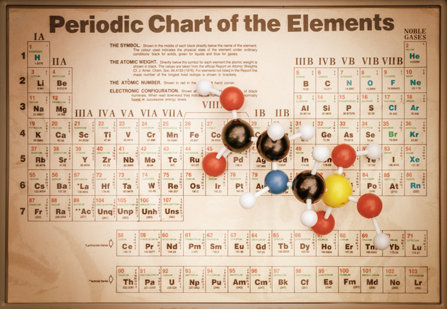
-
HOME
-
WHAT IS STANDOur Mission Our Values Our Help Contact
-
WHAT WE FIGHT FORReligious Freedom Religious Literacy Equality & Human Rights Inclusion & Respect Free Speech Responsible Journalism Corporate Accountability
-
RESOURCESExpert Studies Landmark Decisions White Papers FAQs David Miscavige Religious Freedom Resource Center Freedom of Religion & Human Rights Topic Index Priest-Penitent Privilege Islamophobia
-
HATE MONITORBiased Media Propagandists Hatemongers False Experts Hate Monitor Blog
-
NEWSROOMNews Media Watch Videos Blog
-
TAKE ACTIONCombat Hate & Discrimination Champion Freedom of Religion Demand Accountability
What is “Reality” Anyway?
I took a university philosophy class one time and the part about the nature of reality almost killed me. Aristotle wrote 12 books on the subject, and wow were they complicated. Even the Cliffs Notes version gave me a headache. I thought, however, it was a good way to impress girls, so I struggled on. I passed the class but to this day haven’t found a use for any of Aristotle’s ideas and girls were definitely not impressed.

Years later, I found a definition of reality that was actually useful: “Reality is fundamentally agreement,” wrote Scientology founder L. Ron Hubbard. That might be kind of disappointing to philosophers or people that love complicated things, but for me it worked, and it was quite a relief after that philosophy class.
Take a dining room for example. That is a chair, this is a table, they are solid and you can sit on one and put your dinner on the other. Oak makes a good solid reality, yes it does. We can agree on that pretty easily. It’s real. But if some guy wandered in and said that big oak table was a piñata and hit it with a stick, and candy fell out, well, one of you is crazy.
Back in 1897, for example, Joseph J. Thomson discovered electrons and said matter was like plum pudding and electrons were the plums. He was crazy at that time because nobody agreed with him, but the plum idea kind of made it easier to understand. The idea gradually caught on, until scientists decided that the nice solid oak chair and table were made of tiny particles called atoms orbited by electrons with great spaces between them. So electrons became real and Thomson won the Nobel Prize.
Some ideas catch on, win reality elections and those who agreed become right or sane. Others, not wanting to be crazy or wrong, sign on even though they have doubts. Only the holdouts who refused to subscribe to this new reality become crazy.

But then the scientists got to work to convert the rubes and change the reality. And they did. Objects just seemed solid, but they were actually made of tiny particles with electrons whirling around them. Once the reality changed (reality being a sort of democracy where people vote on what is real and the majority are right and the minority are wrong) people continued to sit on chairs and put dinners on tables, but now they looked at furniture with some suspicion, and thought that if they looked closely enough, they might see a universe of empty space punctuated by a galaxy of particles in motion in the oak table top. And even though they had questions about how a tabletop with huge empty spaces could hold up the meatloaf, they were worried about looking stupid and so didn’t ask.
History has always been full of crazy people. Copernicus was nuts because he dared to contradict Aristotle and say that the Earth rotated around the sun. Ignaz Semmelweis reduced hospital deaths by making doctors wash their hands between doing autopsies and delivering babies. It worked, but doctors were offended that he thought their hands were dirty and Semmelweis ended up in a mental institution. Later on, Pasteur invented the germ theory, and so who’s crazy now?
Some ideas catch on, win reality elections and those who agreed become right or sane. Others, not wanting to be crazy or wrong, sign on even though they have doubts. Only the holdouts who refused to subscribe to this new reality become crazy. Like the guys who still have “Ralph Nader for President” bumper stickers on their Ford Pintos or belong to the Flat Earth Society.
But while it’s pretty easy to agree on table-and-chair-type reality, other things are not so simple. Like religion, politics, economics, climate change, whether the latest Star Wars movie stinks, and so forth. In fact, disagreement seems to be the default discourse setting these days.

So if reality is agreement, what happens if, for example, you’re a Methodist cattle rancher and your daughter becomes a vegan Goth or falls in love with an unemployed poet? What’s to be done? Well, assuming you love your daughter, you can do several things to create understanding. Vegan Goth reality, for example, is strange to you. You’re worried about her getting enough protein to stay healthy, and you were always told to wear white at night to avoid being hit by a car. You were going to give her a George Foreman grill for Christmas but her Amazon wishlist now has stuff like shrunken heads, black curtains and toadstool lamps.
Now if you want to plow ahead and annoy your daughter, just do what you’ve always done, get her that grill, buy her a white raincoat and a gift certificate to the Cattleman’s Restaurant. Creating understanding, on the other hand, takes a little more work, but is quite a bit more satisfying.
Understanding is composed of Affinity, Reality and Communication. In Scientology, it’s called the ARC triangle because those components are connected into a triangle with equal sides and when you improve one of those items, the others improve as well. OK, so you love your daughter, so you start with Affinity, the first point, which is the degree of liking. Now Communicate to her about something you both can agree on, like she should eat more meat … NO! That’s what you disagree on, and it will shrink the Affinity, the Reality and Communication will shrink and she won’t want to talk to you either. Then she’ll be mad at you and you get mad at her and say things you regret and you won’t see her again until you are 90 years old and dying and she shows up because she feels bad.

So communicate to her about something you both can agree on, like how you both love animals … only you eat them … NO! That’s a disagreement again you moron! Just stop at how you love animals and especially her dog “Death,” who in spite of his name is very friendly and likes to be scratched behind his ears.
Now if you think this is some fake trick to get your daughter to like you, then you don’t understand. You will discover that as your Affinity improves, your agreement with her (Reality) seems stronger, and both of you are starting to have fun Communicating. And not only will her ARC improve with you, your ARC with your daughter’s choice of lifestyle will improve also. You may not want to wear black eye-shadow and get your tongue pierced, but you can understand your daughter’s choices better and grant her the right to be who she wants to be.
Keep at it and the ARC will improve until it is strong enough to handle a few small disagreements. You tell her that you are concerned about her health and well-being and she gets it, doesn’t make you wrong, maybe even thanks you. She may tell you some things she doesn’t like about you—just shut up and listen, you might learn something. Most people do things for a reason, and she’ll tell you what those are. You are listening to her reality after all, and you will probably find something to agree about.
None of this means you have to lie, or “make nice,” or pretend to agree to things you don’t, it means you can listen to what she says and acknowledge her so she knows you’ve heard her. Go ahead, take her to a vegan restaurant, it probably won’t kill you.
And don’t get upset if she doesn’t bring her friends around to meet you even if you suspect she’s embarrassed by having an old white-guy father who eats animals.









